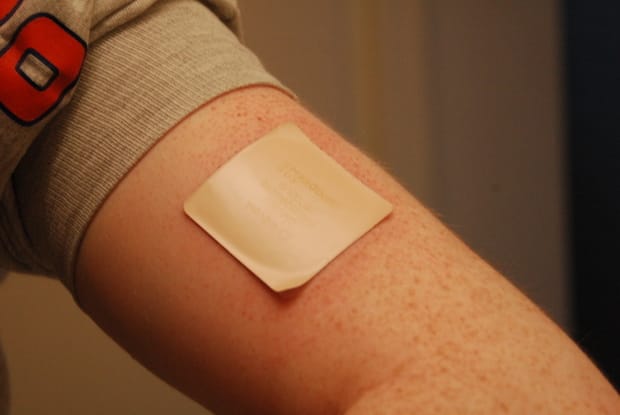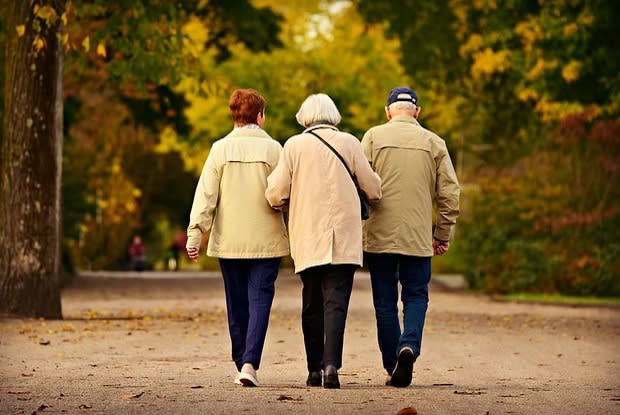Table of contents
I. Symptoms of a Respiratory Disease
II. Smoking and Second Hand Smoke
Symptoms of a Respiratory Disease
Respiratory diseases such as asthma and chronic obstructive pulmonary disease (COPD) affect over 40 million Americans and may drastically lower the quality of life in patients. [1] People may think that breathing problems are just a sign of getting older so it is important to know the warning signs of a lung or respiratory disease. Some symptoms of respiratory disease may be a mere annoyance while others can be more serious. Symptoms of respiratory diseases can be controlled through the use of medications like Ventolin. Read on to learn more about the symptoms of these diseases.
Shortness of breath
One of the most common symptoms of respiratory disease is shortness of breath. Difficulty breathing may occur after little or no exertion or can begin after exercising but then not go away. [2]
Chronic cough
A chronic cough is a cough that you have for over a month. A chronic cough can be an important early symptom of respiratory disease. Coughing attacks may be worsened if you also have a virus such as flu or a cold. [2]
Chronic mucus production
Another symptom of respiratory disease is chronic mucus production. Your airways produce mucus to defend themselves against irritants or infections. You may notice this if you have a cough that produces mucus or if you need to clear your throat first thing in the morning. [2] [3]
Wheezing
Wheezing or noisy breathing is a sign that your airways may be too narrow or that they are blocked by something unusual. Wheezing or whistling when breathing is a common sign of asthma in children. [2] [4]
Chest pain
Chest pain or tightness that lasts over a month or that feels worse when you breathe in or cough is another symptom of respiratory disease. [2]
Smoking and Second Hand Smoke
Smoking and respiratory diseases
Smoking is the major cause of serious lung diseases including chronic obstructive pulmonary disease (COPD) and lung cancer. Smoke from cigarettes, cigars and pipes contains over 4,000 harmful chemicals that can damage your lungs and airways leading to respiratory diseases. [5] Asthma sufferers who quit smoking have healthier lungs within six weeks. [6]
How to stop smoking
It is never too late to stop smoking, even if you have been smoking for many years. Stopping smoking at any time can help to improve your health.
There are various methods to stop smoking. Prescription medications that do not contain nicotine include Chantix or Zyban. These medications block the pleasurable effects of nicotine reducing your cravings. Another popular method to stop smoking is nicotine replacement therapy (NRT) which provides nicotine to the body to help with withdrawal symptoms. Popular NRT treatments include NicoDerm patches, Habitrol patches, or Nicorette Gum. Both of these methods are even more effective when they are combined with counseling support. [7]

Second-hand smoke
Two-thirds of the smoke from a cigarette is not inhaled by the smoker but instead enters the air around. Second-hand smoke can cause disease and death and should be avoided where possible. [5] Making sure that your home and car are smoke-free can help to protect your lungs and others' lungs.
Lifestyle Tips at Home
There are many different small changes that you can make in your home to help keep your lungs healthy. A key lifestyle tip for people living with respiratory disease is to keep your home clean, ventilated, and dry.
Diet
Eating too much saturated fat such as lard, chocolate, biscuits, or fatty or processed meats can prevent asthma medication from working properly and should be avoided. Eating fresh fruit, vegetables and fish may help improve your lung health and help to avoid asthma attacks. [6] As well as a healthy diet, make sure to drink plenty of water. Staying hydrated helps your lungs to function better. [8]
Breathing exercises
Simple breathing exercises can be done anywhere and can help your lungs to continue functioning correctly. Simple exercises include slow, deep inhaling, or counting how long a natural breath lasts and trying to increase that. [8]
Bedding and furniture
Dust is a common trigger for people with asthma or allergies. The leading cause of dust allergies are dust mites that are often found in bedding and mattresses. Wrapping pillows and mattresses with mite-proof covers and washing bedding and pillows weekly in hot water can help limit your exposure to dust mites. Other long-term changes you can make are to replace fabric or upholstered furniture with wood, vinyl, or leather furniture and to replace carpets with wood or hard flooring. [9]
Moisture and ventilation
Dust mites thrive in moist air so try to keep the humidity in your house between 30 and 50 percent. Using a dehumidifier can help with this. You can also use bathroom and kitchen exhaust fans to vent moisture to the outside. Keeping moist surfaces including bathtubs, showers and kitchen counters clean and dry will also help. Another easy way to keep your lungs healthy indoors is to keep your home ventilated. Open your windows when you are cleaning or doing other household jobs.

Lifestyle Tips Outside
Air pollution
Air pollution can cause lots of health problems, particularly in people who have lung diseases. Even low levels of air pollution may cause health problems. You can help to keep the air clean by using public transit and not using pesticides or chemicals in your garden.
If you already have a respiratory disease, then staying indoors when air pollution is high is a good idea. You can check your local Air Quality Index online so that you know when to stay inside. [5]
Exercise
Having a more active lifestyle can make you feel better. Moderate exercise makes you breathe faster and deeper but does not make you ‘puff and pant’. You should aim for 20 minutes of consistent, moderate movement such as a bike ride or brisk walk. [8] After exercising, you should breathe through your nose and cover your mouth while you do cool-down exercises. Remember to pace yourself and use any prescribed inhalers your doctor has recommended, such as Ventolin. Eating healthier and exercising more may help you to lose weight. Losing 5-10kg can really improve asthma and other respiratory diseases. [10] Your doctor can help you develop an exercise program that is suitable for you.

Employment
People who work in jobs such as construction may have a higher risk for respiratory or lung diseases. People who work near chemicals, dust or asbestos should wear protective clothing and a gas mask. All workers should make sure that their work areas are properly ventilated. [5]
The content in this article is intended for informational purposes only. This website does not provide medical advice. In all circumstances, you should always seek the advice of your physician and/or other qualified health professionals(s) for drug, medical condition, or treatment advice. The content provided on this website is not a substitute for professional medical advice, diagnosis or treatment.
